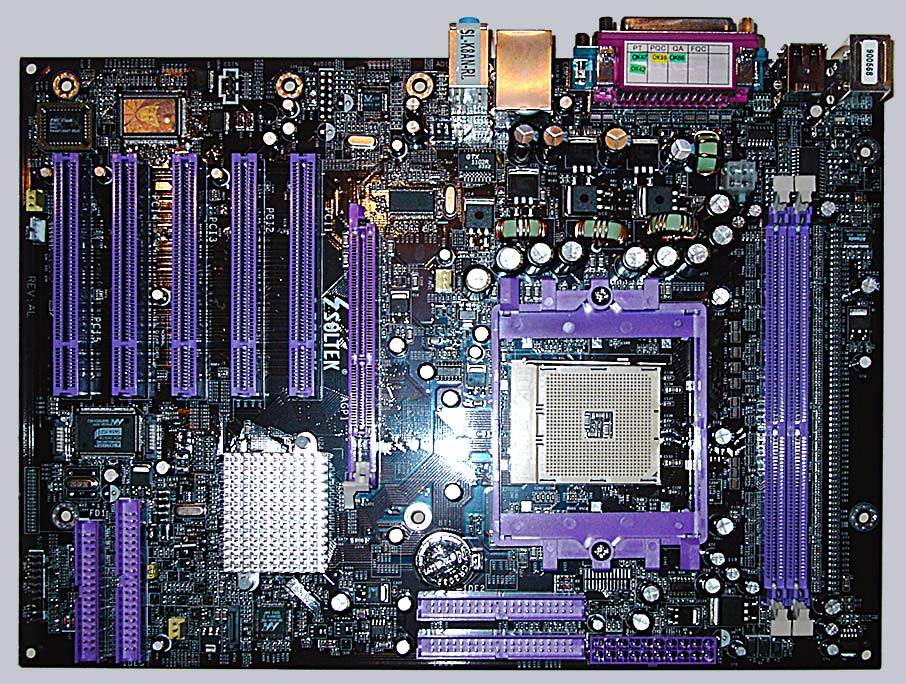The Soltek SL-K8AN2 is a relic from the transitional era of early 64-bit computing, designed for AMD’s Socket 754 platform. Released around 2004, this board catered to users seeking an affordable yet feature-rich solution to harness the power of the AMD Athlon 64 CPUs.
At the heart of the SL-K8AN2 is the NVIDIA nForce3 250 chipset, which was praised at the time for its performance and integrated features. The board supports AGP 8x graphics cards and includes Serial ATA support, integrated 10/100 LAN, and onboard 6-channel audio, offering everything a mainstream gamer or enthusiast would need in that generation.
One of the standout features of this motherboard was its reliability and ease of overclocking, thanks to a straightforward BIOS interface and flexible voltage controls. It also had good memory compatibility, supporting DDR400 RAM, which was the standard for performance builds during that era.
Build quality was typical of Soltek — solid but not flashy. The purple PCB, a Soltek signature, gave it a unique visual flair. While not as well-known as ASUS or MSI, Soltek carved a niche among budget-conscious DIY builders who wanted performance without breaking the bank.
In hindsight, the SL-K8AN2 represents a snapshot of a time when desktop computing was rapidly evolving. It supported early 64-bit computing, bridged the gap between IDE and SATA, and was part of the final wave of AGP-based motherboards before PCI Express became the norm.
Today, it's a cherished piece among retro hardware collectors and retro PC gamers who want to relive the early 2000s experience.


